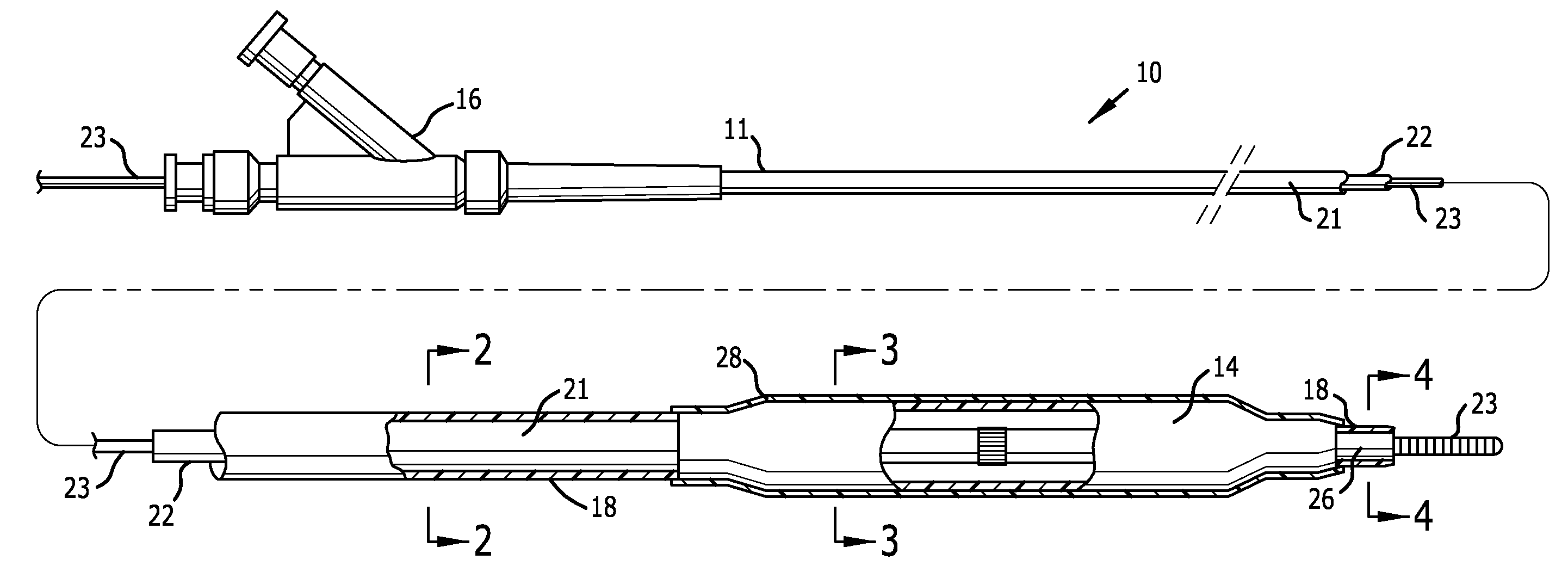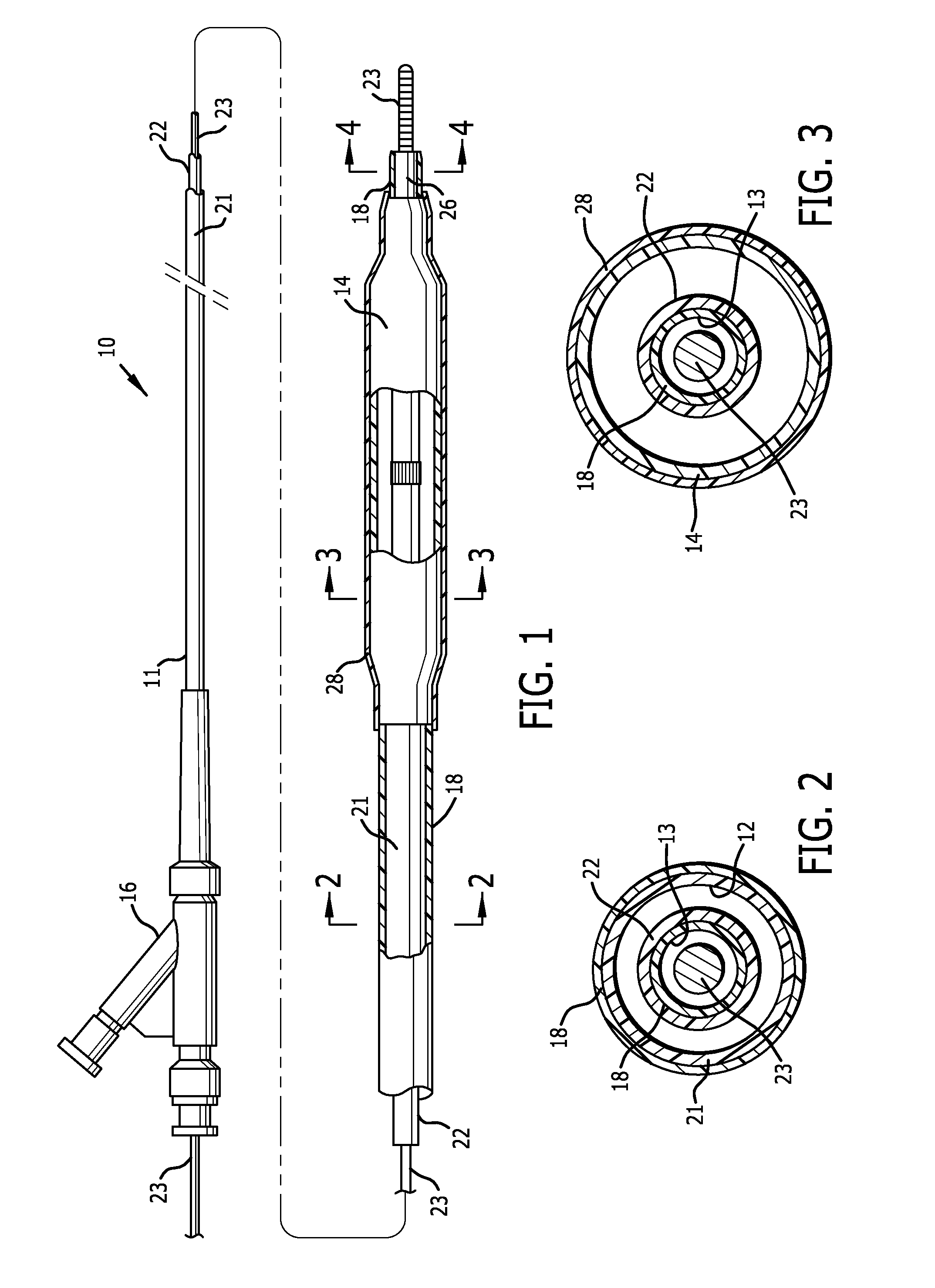Manufacturing processes for making medical devices having a coating gradient
a technology of medical devices and gradients, which is applied in the direction of packaging foodstuffs, catheters, packaged goods, etc., can solve the problems of inadvertently reducing the lubricity of the coating, reducing the lubricity of the device, and undesirable poor adhesive strength, so as to reduce the effect of decreasing the lubricity or durability of the coating
- Summary
- Abstract
- Description
- Claims
- Application Information
AI Technical Summary
Benefits of technology
Problems solved by technology
Method used
Image
Examples
Embodiment Construction
[0033]FIG. 1 illustrates one embodiment of the invention in which the medical device having a lubricious coating of the invention is a balloon catheter 10. The balloon catheter 10 generally comprises an elongated catheter shaft 11 having an inflation lumen 12 and a guidewire lumen 13 (see FIG. 2), and an inflatable balloon 14 on a distal shaft section with an interior in fluid communication with the inflation lumen. An adapter mounted 16 on the proximal end of the catheter shaft provides access to the guidewire lumen and connects to a source of inflation fluid (not shown) for inflating the balloon 14. As best shown in FIGS. 2 and 3, illustrating transverse cross sectional views of the catheter of FIG. 1 taken along lines 2--2 and 3--3, respectively, in the embodiment of FIG. 1, the shaft comprises an outer tubular member 21 having the inflation lumen 12 therein, and an inner tubular member 22 disposed in a lumen of the outer tubular member and having the guidewire lumen 13 therein c...
PUM
| Property | Measurement | Unit |
|---|---|---|
| Concentration | aaaaa | aaaaa |
| Hydrophilicity | aaaaa | aaaaa |
Abstract
Description
Claims
Application Information
 Login to View More
Login to View More - R&D
- Intellectual Property
- Life Sciences
- Materials
- Tech Scout
- Unparalleled Data Quality
- Higher Quality Content
- 60% Fewer Hallucinations
Browse by: Latest US Patents, China's latest patents, Technical Efficacy Thesaurus, Application Domain, Technology Topic, Popular Technical Reports.
© 2025 PatSnap. All rights reserved.Legal|Privacy policy|Modern Slavery Act Transparency Statement|Sitemap|About US| Contact US: help@patsnap.com



